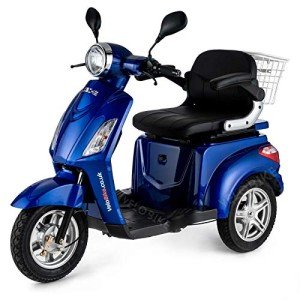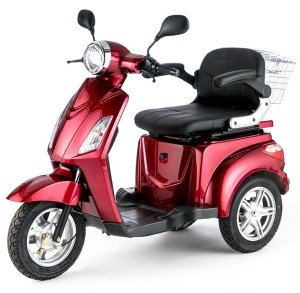Guide To Velco: The Intermediate Guide In Velco
페이지 정보

본문

Velcro: A Revolutionary Fastening Solution
Intro
Velcro, a name that has nearly ended up being associated with hook-and-loop fasteners, has actually revolutionized the way we consider securing materials. Typically a staple in various markets and households, Velcro uses a simple yet reliable solution to protect objects without the requirement for buckles, buttons, or zippers. This article explores the origins, systems, applications, and advantages of Velcro along with addressing some regularly asked questions.

The Origins of Velcro
Velcro was created in the late 1940s by Swiss engineer George de Mestral. After a hunting journey in the Alps, Mestral ended up being captivated by the burrs that stayed with his dog's fur. Upon closer evaluation, he understood they worked through a system of tiny hooks that captured anything with a loop, consisting of material and fur. Recognizing the capacity of this natural fastening mechanism, Mestral started a journey to recreate it in an artificial form. By 1955, he had actually patented his development, branding it "Velcro," a combination of the French words "velours" (velvet) and "crochet" (hook).
How Velcro Works
Velcro consists of 2 separate pieces: a hook side and a loop side. These two parts interlock when compressed, creating a strong bond that can be quickly released with an easy pull. The functioning of Velcro can be broken down into these primary components:
| Component | Description |
|---|---|
| Hook Side | This side includes tiny hooks that capture and keep loops. |
| Loop Side | This side includes soft loops created to yield to hooks when gotten in touch with. |
Mechanism of Fastening
- Interlocking: The hooks on one side catch the loops on the other, creating a physical interlock.
- Strength: The variety of hooks and loops ensures a substantial holding strength, making it appropriate for both light and heavy-duty applications.
- Ease of Use: Velcro can be disengaged and re-engaged many times without losing its effectiveness, setting it apart from more conventional attachment methods.
Applications of Velcro
Velcro has found application across a myriad of sectors, consisting of:
Fashion Industry
- Sportswear
- Shoes (specifically kids's footwear)
- Accessories (belts, bags)
Medical Field
- Orthopedic gadgets
- Plasters
- Prosthetics
Automotive and Aerospace
- Seat covers
- Interior linings
- Safety gear
Family Items
- Curtains
- Carpets
- Organizers
Industrial Use
- Cabling
- Devices fastening
- Tools storage
Benefits of Velcro
The appeal of Velcro can be credited to a number of benefits it provides over standard fastening approaches:
- Quick and Easy to Use: No tools are needed, making it user-friendly.
- Versatile: Works on various surfaces and materials.
- Adjustable: Allows for easy change in size (e.g., straps).
- Long lasting: Holds up under repeated usage.
- Washable: Maintains its function even after washing.
Possible Drawbacks
While Velcro is useful in many contexts, there are some restrictions to be familiar with:
- Noise: The sound of Velcro being pulled apart can be loud in peaceful settings.
- Use and Tear: Over time, excessive use might lead to fraying or reduced effectiveness.
- Limitations with Heavy Loads: While it can hold significant weight, it may not be ideal for very heavy items.
Frequently asked questions about Velcro
1. Is Velcro waterproof?
Yes, Velcro can be made from water resistant products, making it appropriate for outside and marine applications.
2. Can Velcro be reused?
Definitely! Velcro is developed for repeated usage, and many items can be resealed and opened multiple times.
3. How do you clean Velcro?
Cleaning up Velcro is basic. You can use a lint roller or a soft brush to get rid of debris. For persistent dirt, it may be washed gently with water.
4. Is Velcro strong enough to replace zippers?
In many applications, yes, Velcro can successfully change zippers, particularly in circumstances where quick fastening and unfastening are needed.
5. Exist different kinds of Velcro?
Yes, there are numerous types, consisting of varying widths, colors, adhesive strengths, and materials created for various applications (i.e., high-temperature, outdoor, and so on).
Velcro has proven to be a versatile and innovative securing service that has penetrated several sectors, enriching both daily life and commercial applications. Its capability to provide a trusted and user friendly method of attaching makes it a long-lasting part of modern-day style. From casual garments to innovative medical applications, Velcro continues to maintain its credibility as a staple attachment method for many uses. Whether it's for the fashion enthusiast or Velco - article source, an expert in the medical field, Velcro remains an unsung hero on the planet of attaching innovation.
By changing how we link and secure products, Velcro is a testimony to the power of ingenious thinking and simplicity in design. As technology progresses, we can just expect much more creative applications for this exceptional development in the future.
- 이전글Five Killer Quora Answers To Certified Glazier 25.07.01
- 다음글The Secret Secrets Of Buy Counterfeit Money 25.07.01
댓글목록
등록된 댓글이 없습니다.